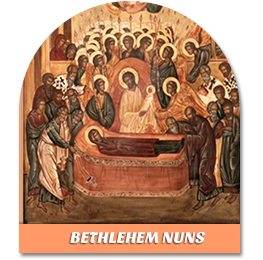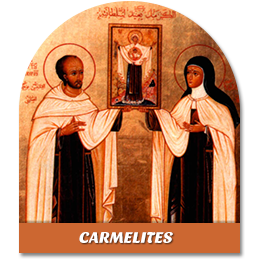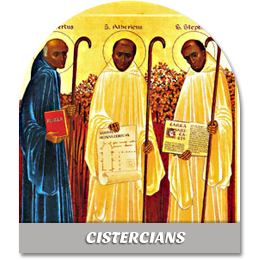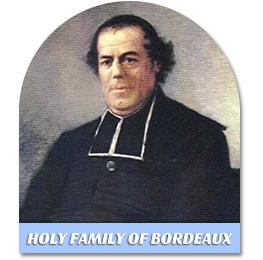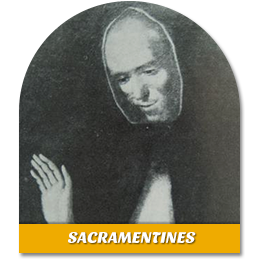
Origin of the Order
In 1084, Saint Bruno, “burning with divine love”, settled in the Chartreuse desert in the French Alps with six companions to achieve his intention to create a community of recluse living the exclusive contemplation of God. “Mounting a persevering guard waiting for the Master’s return… while meditating as long as they desired and remaining composed in themselves” (St Bruno).
In their wake and in their solitude, other companions join them later on. At the behest of St Hughes, bishop of Grenoble, Guigues V drafted “the Customs” which organized their meditative life and which constituted the foundation of the Carthusian Order.
The Carthusian Nuns
 Around 1145, the nuns of the Prébayon monastery in Provence adopted the life-style of the carthusian monks and the prior of the Grande Chartreuse provided them, with their «customs ».
Around 1145, the nuns of the Prébayon monastery in Provence adopted the life-style of the carthusian monks and the prior of the Grande Chartreuse provided them, with their «customs ».
As a result, the feminine and the masculine branches of the Carthusian Order merged in a single family under the leadership of the prior of the Grande Chartreuse monastery. They share the same charismatic solitary life in individual hermitages secluded from the outside world, a set-up which favorises the interiority requested for a life of intimate union with the Lord
In love with Him with all one’s heart, listening to his Word
On the rythm of the church’s night and day office,
“In the eternal newness of the mystery that is Mary’s spiritual engendering of Christ in our hearts” (Carthusian statutes).
The cloistered nuns in their solitary cells and the lay nun out of cells, pledge to love ever deeper, through various manual tasks and to transfigurate their life-time banalities. Through her labour, the Carthusian nun conveys her love message.
“They transform their spare time into busy leisure and at the rest in tranquil activity” as St Bruno recommended. This solitude does not exclude fraternal life. From time to time, long walks in Mother Nature, usually, two by two, favour personal dialogue. These friendly encounters help sharing God‘s message and generate necessary recreation since “if the bow is kept continually, it loses its resilience and becomes less fit for its works” (St Bruno).
These joyful moments of being together further our human maturity and spiritual friendship and, at the same time, nourish our own deep solitude with God.
“Only those have experienced the solitude and silence of the desert can know what benefit and divine joy they bring to those who love them” (St Bruno).
Links and Website
.









